Fishing Dry/Dropper with a Euro-Specific Rod and Mono Rig
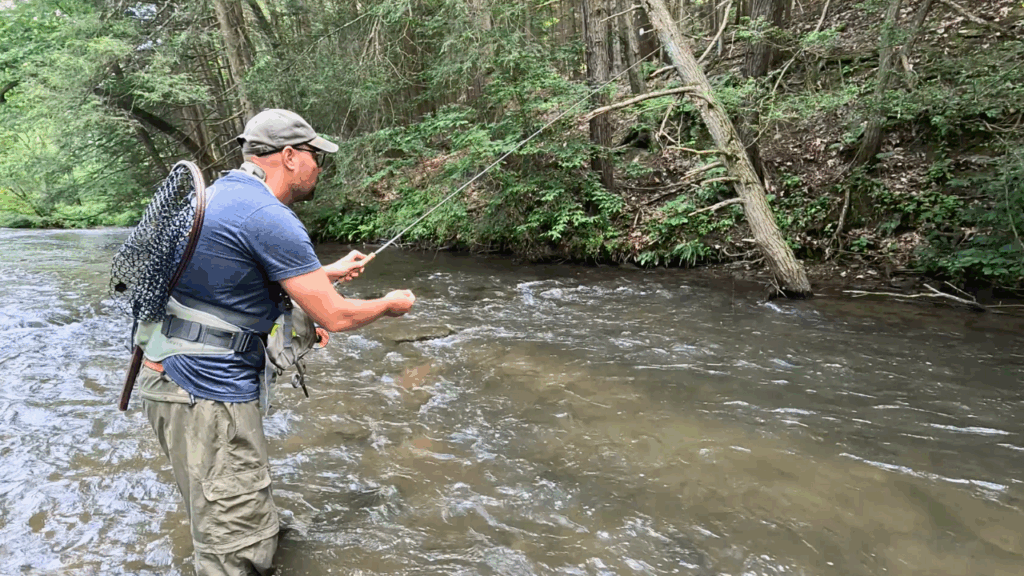
Many anglers define Euro nymphing as establishing direct contact with heavily weighted nymphs to execute a dead drift on a tight line. And although this is the most commonly used approach when Euro nymphing, there are several other methods that allow anglers to remain adaptive and versatile. Euro nymphing also includes situational approaches such as floating the sighter, leading (actively manipulating the flies through the drift) vs. tracking (using the current to guide the flies through the drift), and working micro streamers. However, it is the dry/dropper approach to Euro nymphing that I have more recently discovered to be highly effective – specifically, fishing a dry/dropper with a Euro-specific rod and mono rig.
In mid-April of 2025, I had the opportunity to join a Dark Skies Fly Fishing group trip to Patagonia, Argentina. One of the methods we employed to fish these large rivers was the hopper/dropper rig, fished from drift boats. Although this was hardly my first time using the dry/dropper technique, it was the first time I used it nearly exclusively during an entire fishing session. As I became more adept at fishing this way, I soon recognized the effectiveness – and fun, I might add – of using the dry/dropper approach.
Upon my return, I committed to practicing and refining this technique, adding yet another valuable tool to my arsenal, but I set out to do so with my Euro rod and mono rig. This has allowed me to be even more versatile and effective on the water when a standard Euro nymphing technique isn’t the best option.
When Should I Fish a Dry/Dropper Rig Euro Style?
Like all things in fly fishing, a dry/dropper setup is not always the best choice for targeting trout. There are situations where other approaches will be far more effective. Knowing how and when to fish these methods often translates into the difference between a few trout in the net versus consistent action throughout a session. The dry/dropper approach fished on a Euro rig is no exception.
Foremost, the type of water being fished is the primary determining factor for selecting a dry/dropper approach fished with a Euro rig. This method is best used during the summer and fall months on small to medium-sized waterways with shallow water conditions. It’s also favorable on larger waterways – forty feet wide or more – when targeting trout in skinny riffles, shallow pocket water, and tight, brushy banks. However, it’s not ideal in situations where you need a long cast of more than 15-20 feet to reach fish, which we’ll discuss in a bit.
One reason I largely prefer Euro nymphing is because it allows me to deliberately and tactically work shallow water that would be extremely challenging or even impossible with a traditional indicator rig. Nevertheless, there are times, especially on wild trout waters, when fish feed in water so shallow that a tight-line approach becomes difficult. That’s where a dry-dropper fished on a Euro-specific rod and mono rig comes in.
A dry/dropper fished on a mono rig allows for precise depth control, with the dry fly landing softly and not spooking cagey wild trout, and can be adjusted to fish shallow water. This water depth – essentially fifteen inches or less – is where the dry/dropper shines, and when fished with Euro tactics (a Euro-specific rod and mono rig), it can be downright deadly.
Recently, a friend and I fished a small limestone creek in central Pennsylvania that consists largely of shallow riffles and pockets. At first glance, the stream appears to hold little to no trout water. Nonetheless, thanks to its cold, clean, and fertile flow, the biomass is off the charts, holding more wild trout than seems possible.
My friend chose to fish a tandem Euro nymph rig with a #14 tan Squirmy Wormy and a #14 Green Weenie on a tight line. I elected to fish a #10 Tan Parachute – more on this fly later – with a #18 Olive Perdigon as a dropper, only eight to ten inches below. We both caught fish that day, albeit in very different water types. My buddy focused on the deeper runs and pools, while I found success in the shallowest water: riffles, pockets, and tight, brushy banks.
Using these different approaches, my friend found it difficult to manage a tight-line drift in extremely shallow water – six to twelve inches deep – while I didn’t experience any takes in water knee to waist deep unless I made significant depth adjustments. My nymph was simply fishing too shallow and not getting down to the feeding positions of trout holding in deeper water.
Another time a dry/dropper fished with a Euro-specific rod and a mono rig is favorable is when fishing small Class A tributaries for native brook trout and wild brown trout. From late April through early October, fish in small mountain streams tend to always be looking up – especially those reckless native brook trout! Even on large waterways with brookies, never shy away from fishing the surface. On very small streams in late spring through early fall, if the water is running above average with greater turbidity, I always reach for a dry/dropper rig to target fish feeding on or just beneath the surface.
On these small streams, where flies are presented within fifteen feet of the angler, a Euro rod can be an excellent tool. The longer rods (10–11 feet) provide greater reach than conventional small stream rods in the 7.5–8-foot range. Add in the angler’s arm length, and that reach is extended to twelve to fourteen feet. This reach becomes a major advantage when high-sticking, as the dry fly and nymph are directly beneath the rod tip on a tight line. There is certainly a crossover of approaches when Euro nymphing successfully.
The longer rod also affords greater control to lead flies to and around structure with dexterity. Leading the flies means purposefully guiding them into likely holding water. To do this, cast upstream of the target, then slow or stop the rod, drop the tip, mend the line, and establish a dead drift. Be alert – the strike might happen as soon as the dead drift begins!
Leading a dry/dropper along a single seam tight to the bank, beneath overhanging weeds, limbs, or brush, is a sure-fire way to hook trout holding in this shallow water hotspot. Leading flies into pockets, around submerged rocks, logs, wood jams, potholes, and seams in skinny riffles is also much easier with the control a longer rod provides.
A word of caution: Even on larger waterways where fish readily take surface and subsurface flies simultaneously, a Euro-specific rod is not the best tool for the job. Longer casts and broader presentations are often required. In these cases, while a dry/dropper can be very effective, it’s best to fish it with a conventional 9-foot 5- or 6-weight rod, which can better turn over larger, wind-resistant dry flies and heavier nymphs at distance.
The final, though less frequent, situation where I use a dry/dropper on a Euro rig is during hatch season, when bugs are active in the system but trout are not visibly rising. Sometimes, anglers simply miss the hatch window – it may have occurred twenty minutes before arrival, or heartbreakingly, twenty minutes after departure! Some hatches, like Sulphurs, may not get going until after dark, or may have happened the day before. Still, hatching insects remain active in the system, either as nymphs or adults, and trout key in on them. Offering both life stages to the trout gives an advantage, as different parts of the water column are being actively targeted.
Rigging for Dry Dropper on a Euro Rig
When choosing to fish a dry/dropper rig with a Euro-specific rod, there is no need to change your leader setup. I fish my standard light mono leaders – either a 0.008” or 0.012” butt section – that include 5–6-pound sighters. Although the sighter becomes obsolete when fishing a dry/dropper rig, there’s no need to remove it. Remember, the goal is to remain versatile and adaptable. Being able to switch between approaches without needing to completely re-rig is crucial.
However, one drawback of using a mono rig in this situation is its difficulty turning over wind-resistant dry flies. Couple this with limited casting distance, and it becomes clear that no single tool is perfect for all situations. In this case, we have to modify our casting stroke and use tuck, lob, water-load, or standard dry fly casts similar to those used in Euro nymphing.
Depth of Dropper
The distance between the dry fly and dropper depends on the depth you intend to fish, which in turn depends on where trout are holding and the type of water you’re targeting. As discussed earlier, the dry/dropper rig excels in skinny riffles, pockets, and along banks in wild trout streams. If the water averages eighteen inches deep, setting the dropper at eighteen inches or more will likely place the nymph below feeding lanes and increase the chance of snags.
Instead, set the dropper so the nymph rides four to eight inches off the bottom. For example, in eighteen inches of water, adjust the distance between the dry and dropper to about 12–14 inches. It’s also a good idea to attach the dry fly as a tag that allows you to adjust the depth without re-tying the entire rig.
Tying the Dry Fly as a Tag
There are two primary methods for rigging a dry/dropper setup: attaching the dry fly as a tag or attaching the nymph to the hook bend of the dry fly. The simplest, and likely most common, way is to tie the dry fly to the end of the tippet, then attach the dropper by tying a second length of tippet to the bend of the dry fly’s hook.
This hook-bend rig is effective for its simplicity, taking little time to tie and being beginner-friendly. However, it comes with some disadvantages. First, if the dry fly snags and must be broken off, both flies are lost. Second, the depths of both flies are fixed and can’t be adjusted without re-rigging. Third, and perhaps most importantly, the direct connection between the flies can interfere with presentation and hooksets. I’ve noticed that a dropper tied to the bend can cause unnatural drag on the dry fly, and I suspect that, at times, the trailing tippet has interfered with a clean hookset when a trout takes the dry.
For these reasons, I prefer to tie my top fly, whether dry or shallow nymph, on a tag. This is commonly done by leaving a longer tag end when forming a knot (e.g., surgeon’s, nail, blood, or uni-knot) to splice tippet sections together. The dry fly is then tied to this tag. This method is strong and convenient but still results in a fixed depth.
Adjustable Dry/Dropper
My favorite method, based on on-the-water experience, is the adjustable dry/dropper rig. This is accomplished by splicing two tippet sections together at the shallowest expected fishing depth and attaching a perfection loop tag above that splice. The tag can then be slid up or down the tippet to adjust the dropper depth. The splice acts as a “stop,” preventing the tag from sliding past a certain point.
This system is not foolproof. Excessive false casting or powerful deliveries can cause the tag to slide back down to the stop knot. But if the angler uses gentle tuck casts, lob casts, and water-loads, the fly can stay in place at the chosen depth. I routinely check the tag’s position during the day, and if I notice it has slipped, I simply slide it back up and cinch it gently.
Important note: Always wet the tippet, either by dipping it in water or running it through your mouth, before sliding the perfection loop. Doing so reduces friction, which helps avoid kinks and weak spots in the line.
Fly Selection / Floatation
Fly selection for both the dry and the dropper is crucial in dry/dropper fishing. I’m not referring to matching specific hatch patterns here, but rather selecting flies that function well in this style of fishing. Choose a bushy, buoyant dry fly with heavy hackle, a hair wing, or a foam body. These features help the fly float high and stay visible in broken water like riffles and pockets.
Such “attractor” dry flies resemble food forms like large mayflies, caddis, stoneflies, or terrestrials. Even during hatch season, don’t shy away from using attractors. For example, if #16 Sulphurs are hatching, you might fish a #12 parachute-style fly in that color. The size mismatch won’t matter to eager trout, and it improves visibility. (Note: If fishing a specific hatch, sometimes it’s best to forego the dropper completely and just focus on matching that hatch and fishing a single fly.)
During terrestrial season (May through October), use foam-bodied flies or those with deer or elk hair for added flotation. These large dries are also easier for the angler to see and track during the drift, helping to detect subtle takes on the dropper.
My go-to dry fly for dry/dropper fishing is the Tan Parachute in sizes #10 or #12. I tie this pattern with tan dry fly dubbing, moose body hair tail (tied full and thick for buoyancy), tan or grizzly hackle, and a white poly-yarn post. The poly post makes it highly visible, and I over-hackle the fly parachute-style for added floatation. The dry serves dual purposes: it entices surface takes and acts as a strike indicator for the dropper.
Choosing a dry fly large enough to support your dropper is critical. A #18 Blue Wing Olive CDC dry will not suspend a #14 tungsten-beaded Hare & Copper; it will sink and ruin the presentation. Experiment with combinations to find the best ratio between dry fly buoyancy and dropper weight.
For droppers, I usually select a nymph that’s four to five sizes smaller than the dry. A #10 or #12 dry pairs well with a #16 or #18 nymph. Favorite patterns include Perdigons, Shop Vacs, Frenchies, France Flies, Micro Mayflies, small Walt’s Worms, and tiny Green Weenies. For dry/dropper use, I avoid lead underbodies and opt for lighter 2.0mm or 2.4mm tungsten beads—or beadless flies with a light lead wrap if needed. Nymphs need to sink quickly but not so heavily that they swamp the dry.
Lastly, maintaining dry fly floatation is a vital part of success. I used to struggle with re-dressing flies every few drifts, wasting time. But my friend Ralph Scherder taught me an effective method using High N Dry products.
First, hold the fly by the hook and spray it liberally with High N Dry Liquid Spray or Liquid Floatant. Let it dry for a moment to form a moisture barrier. Then, use High N Dry Powdered Floatant with the applicator brush to aggressively work powder into the hackle, post, wings, foam, tail, and dubbing. This method keeps the fly riding high drift after drift. I was honestly blown away by how well it worked!
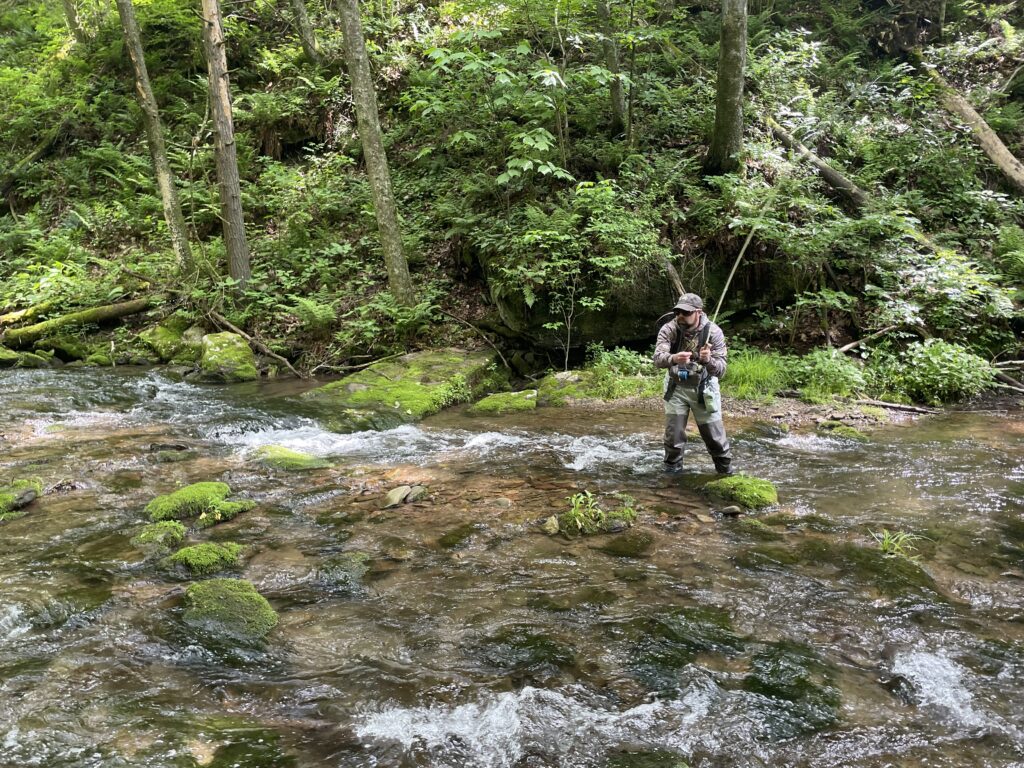
Presentation
Fly selection may be what separates dry/dropper from other Euro nymphing approaches, but the rigging, leaders, and rods remain largely the same, and so does the core presentation philosophy. The dry acts as both a lure and strike indicator, but the underlying strategy is still tight-line nymphing.
As always, the key is keeping both the dry and nymph in a single current seam. Presenting across multiple seams leads to drag and missed fish. If the nymph is in a faster current than the dry, it can pull the dry fly unnaturally. I prefer an upstream and across presentation, allowing me to use the rod’s length and line control to manage my drift and maintain contact.
High-sticking is another essential technique here. Using a long 10–11’ Euro rod, I keep all leader material off the water and maintain a direct connection to the dry fly. The flies are fished directly below the rod tip and followed downstream. High-sticking eliminates slack and improves strike detection.
Euro anglers, regardless of approach, must lead and track their flies through the drift. Leading means purposefully guiding the flies into position, casting upstream and then adjusting rod speed and angle to deliver a natural drift into holding water. Tracking means allowing the current to move the flies after positioning, maintaining a dead drift. You’ll know the drift is correct when the surface current outpaces the sighter, indicating the flies are in slower water closer to the bottom.
Parting Ideas
Many anglers look at Euro nymphing as a one-trick pony, but it can be a remarkably versatile system that can be adapted to conditions. The tools used in Euro nymphing, such as a Euro-specific rod and long mono leaders, are just as effective for presenting flies on the water’s surface as they are below. But the technique is generally the same with the exception that instead of maintaining contact with the nymphs on the stream bottom, you’re fishing tight line to the dry fly.
Still, it’s not a cure-all. In small streams and shallow water such as riffles, pockets, and brushy banks, a Euro rod offers unmatched control and stealth. Mono leaders and bushy dry flies land softly and don’t spook wary fish the way heavy fly lines might. But when you need longer casts, deeper drifts, or pinpoint accuracy across complex currents, a conventional rod and line often perform better.
The ability to execute a variety of approaches, matched to specific water types and trout behavior, is what consistently puts more fish in the net. Versatility is what separates the average angler from the exceptional one. And practicing a wider range of techniques, even at the expense of short-term success, will ultimately make you a more skilled, adaptive angler.
Have a fly fishing question you’d like answered? Drop us a line at info@darkskskiesflyfishing.com! If we use your question in a blog post or in the newsletter, we’ll send you a FREE fly box with a dozen of our favorite nymphs and dry flies!

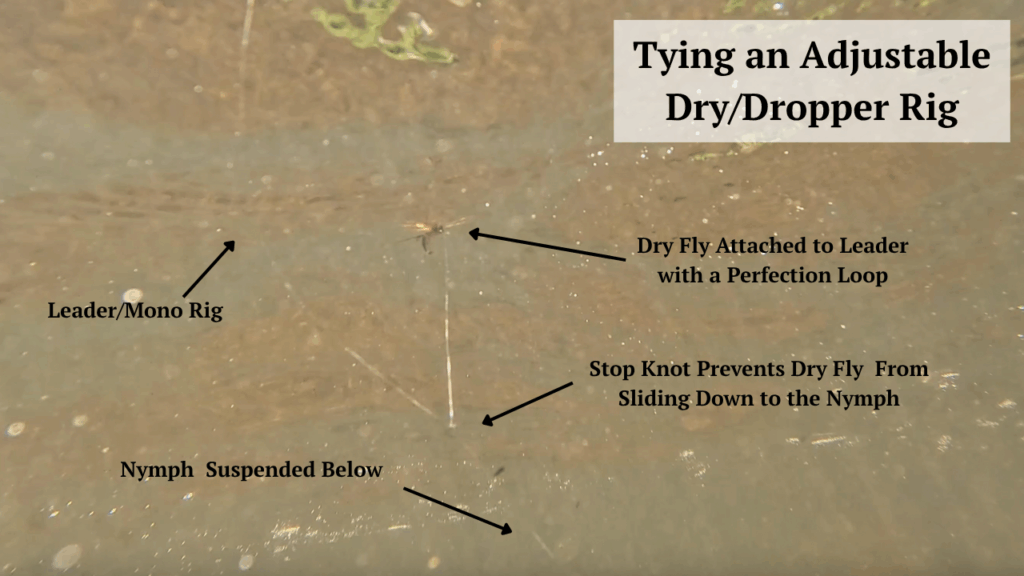
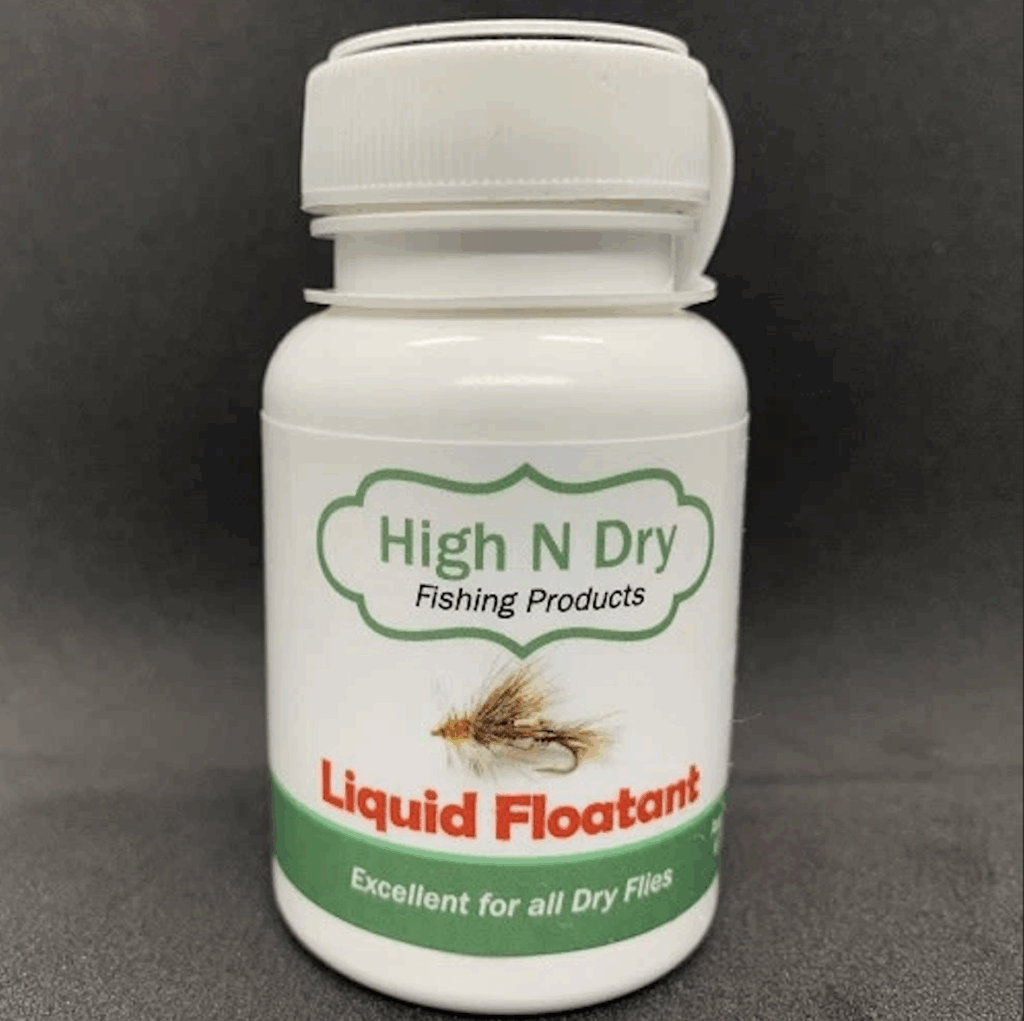
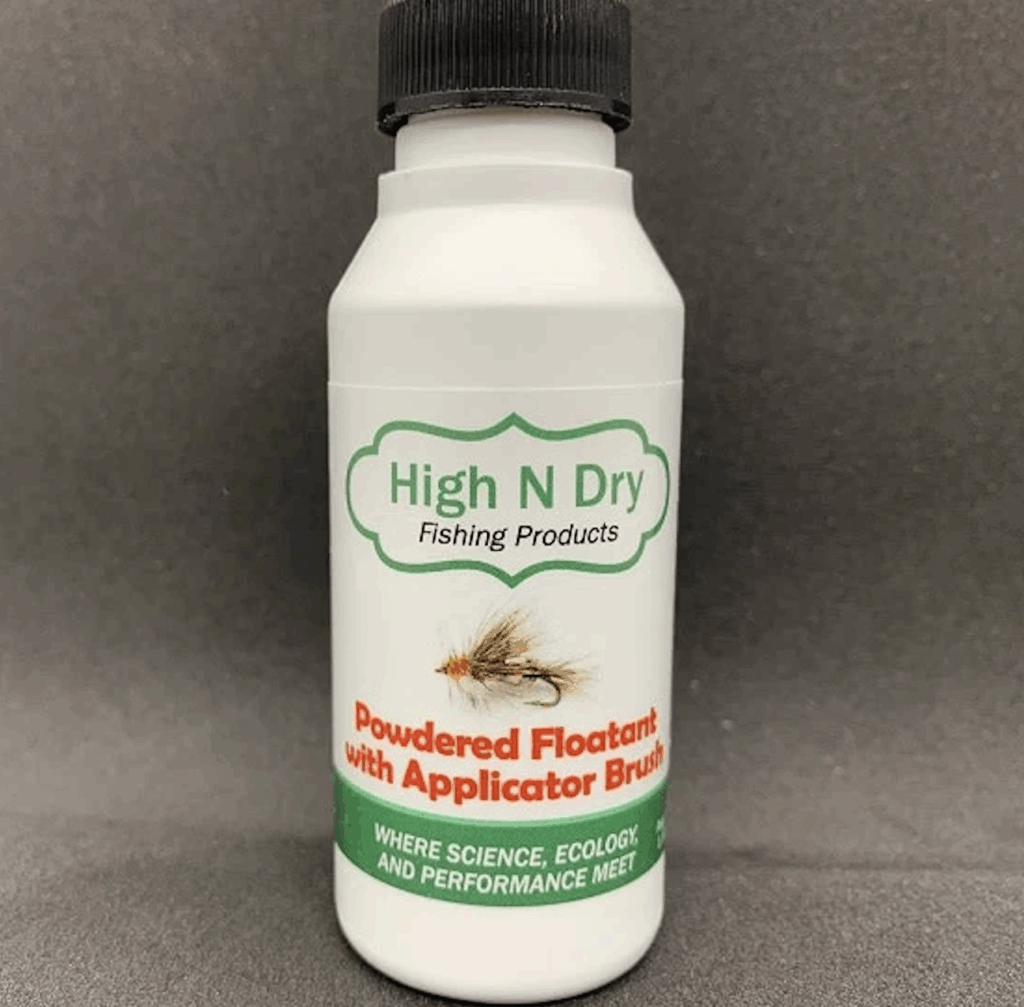
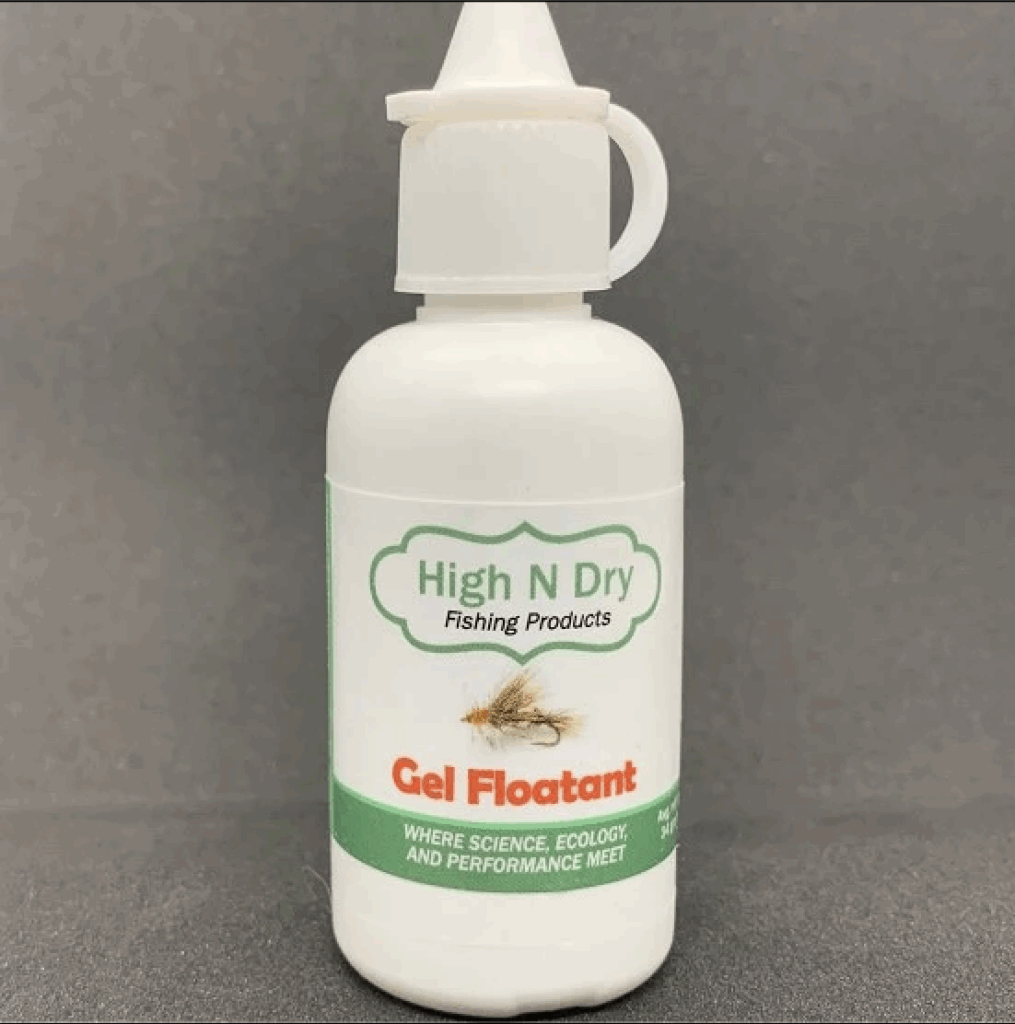
Read your article on adjustable dry dropper using a perfection loop, how do you get the perfection loop to tighten down on the tippet?
Hey Mark, I just pull it snug. If it’s wet it should pull snug enough to stay in place. It shouldn’t cinch down, though…it should be able to slide up and down. It’s more of a short term fix (a handful of casts) than an all day fix. If you find you need to set it deeper, you could always throw another knot in the tippet or add tippet, whichever is easier. It’s not a perfect system, but it is good when you come to a situation where you need to move the dry for a handful of casts. Thanks for reading and commenting! Ralph